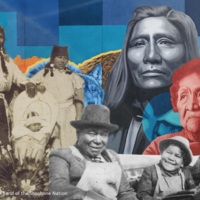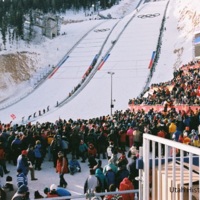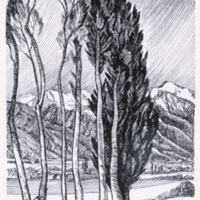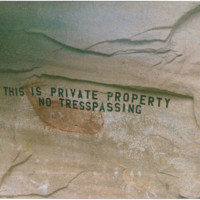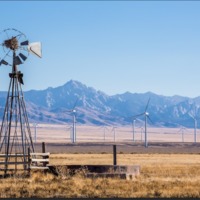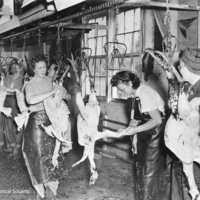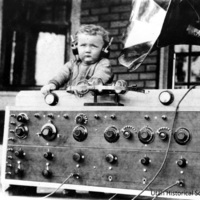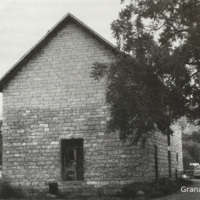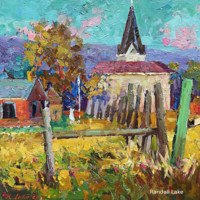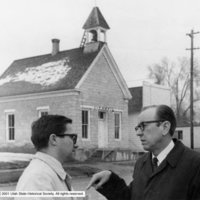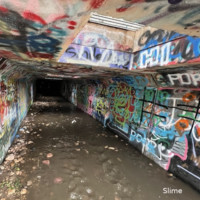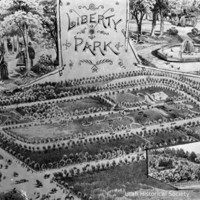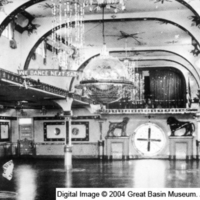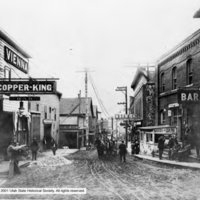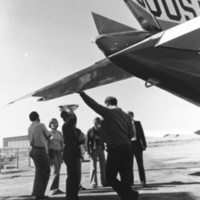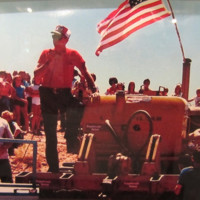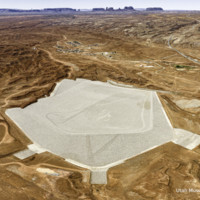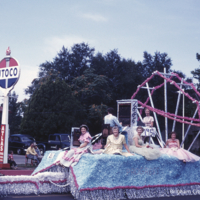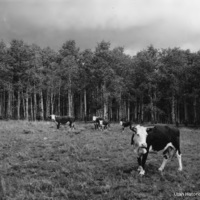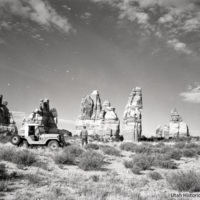Beehive Archive - Rural Utah at a Crossroads
Dublin Core
Title
Beehive Archive - Rural Utah at a Crossroads
Items in the Beehive Archive - Rural Utah at a Crossroads Collection
Lessons in Resilience
Over long years of colonization, the Northwestern Band of the Shoshone Nation faced severe setbacks. But the Tribe continued to adapt to new conditions and found ways to preserve their culture and traditions.
Like all of Utah's Indigenous peoples,…
2002 Winter Olympics Bring Utahns Together
Utah's snowy peaks and valleys became the stage for athletes from around the world during the 2002 Olympic Winter Games in Salt Lake. But the Games were much more than a sporting competition.
For 17 days at the dawn of a new millennium, 3.5 billion…
Utah Tree History: A Landscape in Flux
Utah history isn’t just about the people who lived and worked here. It’s also about some of the oldest living organisms in our state – trees! Learn more about our arborous elders.
The history of trees across rural Utah is one characterized by…
Nine Mile Canyon: Resource Exploitation vs Cultural Preservation
Nine Mile Canyon contains an estimated 10,000 rock art sites created over a thousand years ago, and that’s just the beginning of the canyon's historic and cultural value. But natural gas exploration and extraction nearby pose challenges to…
The Energy Transition Powered by Rural Utah
When you flip your light switch, do you know which part of rural Utah your electricity is coming from? Historically, fuel for the energy grid came from rural areas in the form of fossil fuels. But even as utilities transition to alternative energy,…
Poultry Co-operative Transforms Utah Agriculture
The switch from Utah being a net importer of turkeys to becoming a substantial exporter in the 1920s can be attributed to the efforts of one man -- Benjamin Brown -- and the poultry co-operative he organized.
Today, Sanpete County is notable for its…
Radio: Bridging the Distance Across Rural Utah
Today, we have 24 hour news channels and TikTok to share breaking news and current trends. But for Utahns isolated by distance in the early 20th century, the radio did a tremendous job of connecting residents in rural communities to each other and to…
Ephraim Relief Society Granary
In the late nineteenth century, the local Granary building in Ephraim gave women an unusual public presence on Main Street, and became a proud symbol of early female autonomy, economic success, and charitable endeavors.
You may be familiar with the…
Arts Drive Rural Utah
Just like alfalfa fields and amazing vistas, art is easy to find in rural Utah. It is also a major economic driver.
Utah's state motto is “industry,” a word that may not necessarily bring to mind images of Shakespearean actors or landscape…
Spring City and the Politics of Preservation
Living in a historic home can be lovely – but for Spring City residents in the 1970s, the influx of so-called "outsiders" sprucing up pioneer-era historic dwellings was a source of contention.
During the 1970s, Spring City residents used federal…
Cedar City's Sheep Tunnel
Running underneath Cedar City is a concrete tunnel that is now a hang-out for adventurous kids and graffiti artists. But, what was this secret pathway originally intended to do?
Did you know there is a mile-long passage running underneath the…
Liberty Park: Salt Lake City’s “Central Park”
Today, Salt Lake City’s urban sprawl and poor air quality are noteworthy, but the problem isn’t exactly new. Public parks were once seen as an antidote to the bad effects of increasing urbanization -- kind of like a little bit of the "country" in…
The Magical Van’s Dance Hall
Every weekend across Utah, dancers fill nightclubs twisting to the latest tunes. But did you know that one of the most extravagant and celebrated dance halls in the Beehive State was found in the remote town of Delta? Learn what all the fuss was…
Copper Mine Swallows Company Towns
Demand for copper in the nineteenth and twentieth centuries reshaped Utah’s once-rural Bingham Canyon into an enormous open-pit mine supported by thriving company towns. But that same demand for copper went on to consume those same company…
Flying Professors
Today, remote learning usually happens over a computer. But did you know that Utah colleges once used airplanes to bring professors directly to classrooms in rural areas? These "flying professor" programs represent just one chapter in a longer…
Sagebrush Rebellion in Grand County
When local officials in southern Utah's Grand County declared independence from the federal Bureau of Land Management in 1980, they took rhetoric of small government and individual freedom to a whole new level.
On July 4th, 1980 hundreds gathered…
Wastelanding
When you think of Utah's desert lands, do you picture a pristine wilderness or an arid waste? How we treat this landscape depends on the value that we assign to it.
Before Moab was a world famous tourist destination, it was a mining town. In the…
Brigham City Peach Days
Every autumn, large crowds descend on the small rural town of Brigham City for "Peach Days." It's the oldest harvest festival in Utah. And it all started with a one dollar investment in peach pits back in 1855.
Each September, in northern Utah, the…
Utah Rejects the White Elephant
The United States federal government controls about 65% of land in Utah. The goal of maintaining these lands for public use tends to polarize Utahns. But there was a time when Utah leaders were not averse to federal regulation of public lands.…
The Canyonlands Controversy
Canyonlands is more than just Utah’s third national park. Its designation in 1964 occurred after a fight over who exactly public lands are meant for.
In the late 1950s, the National Park Service began assessing lands for a new national park in the…

